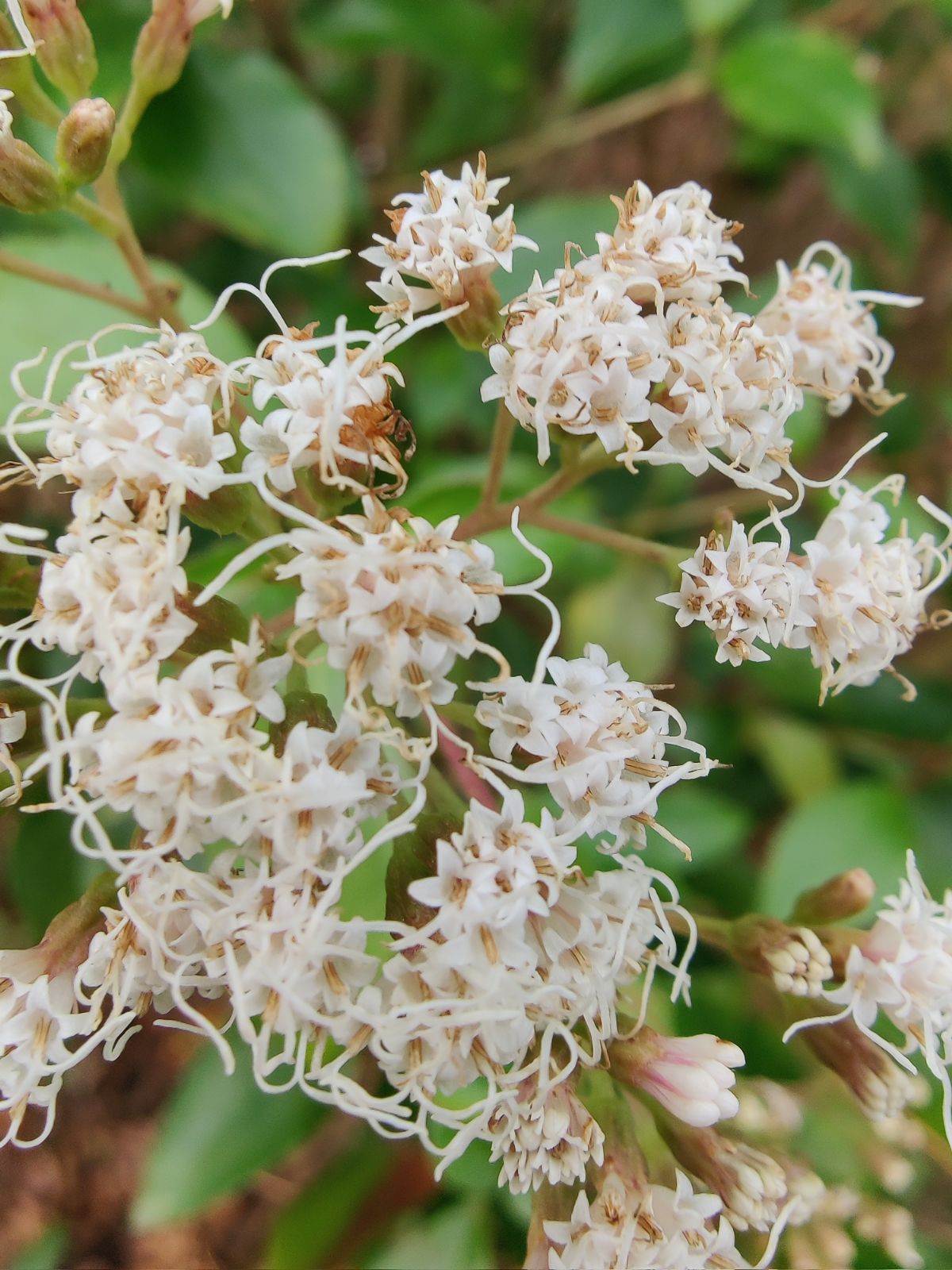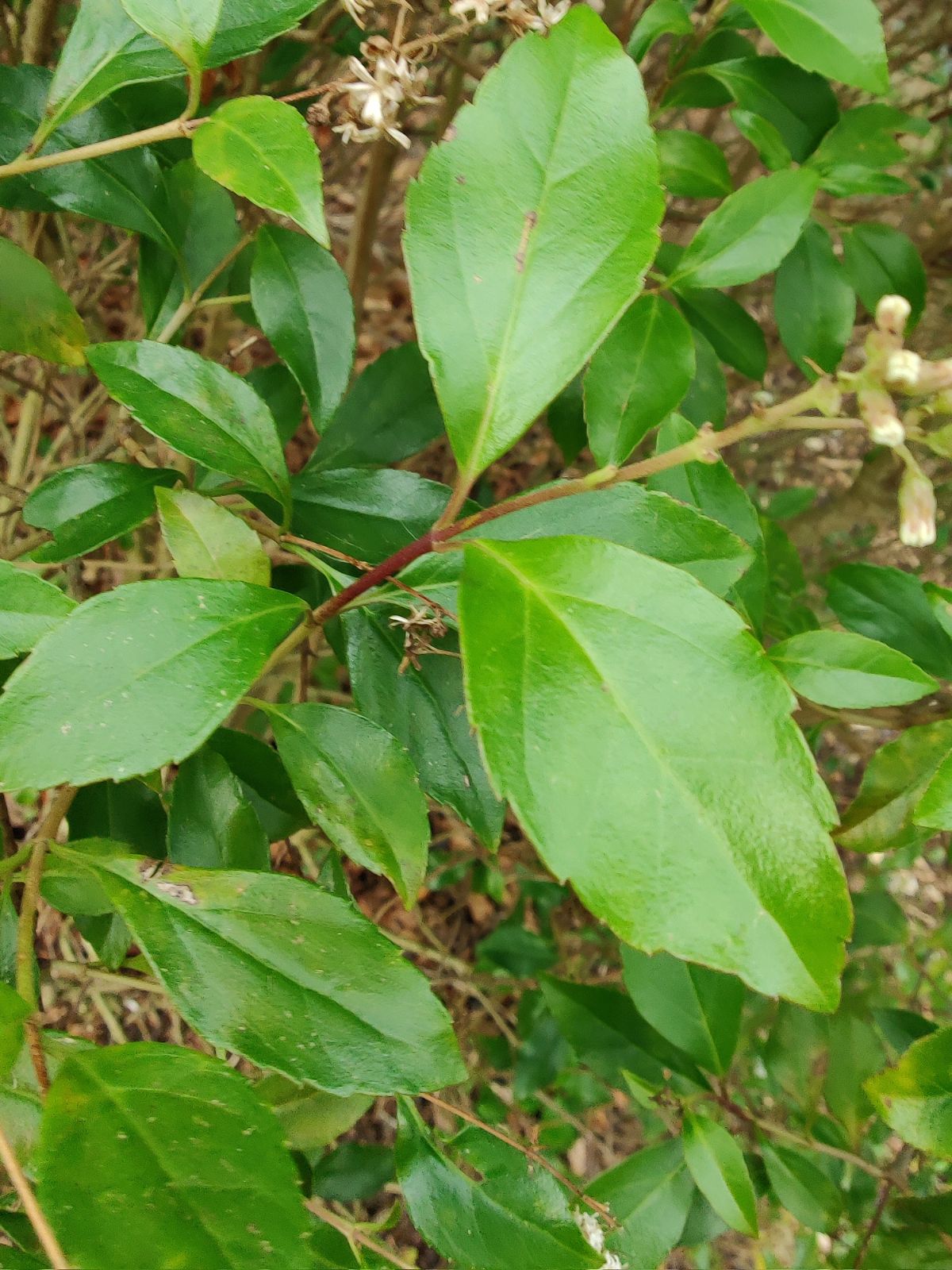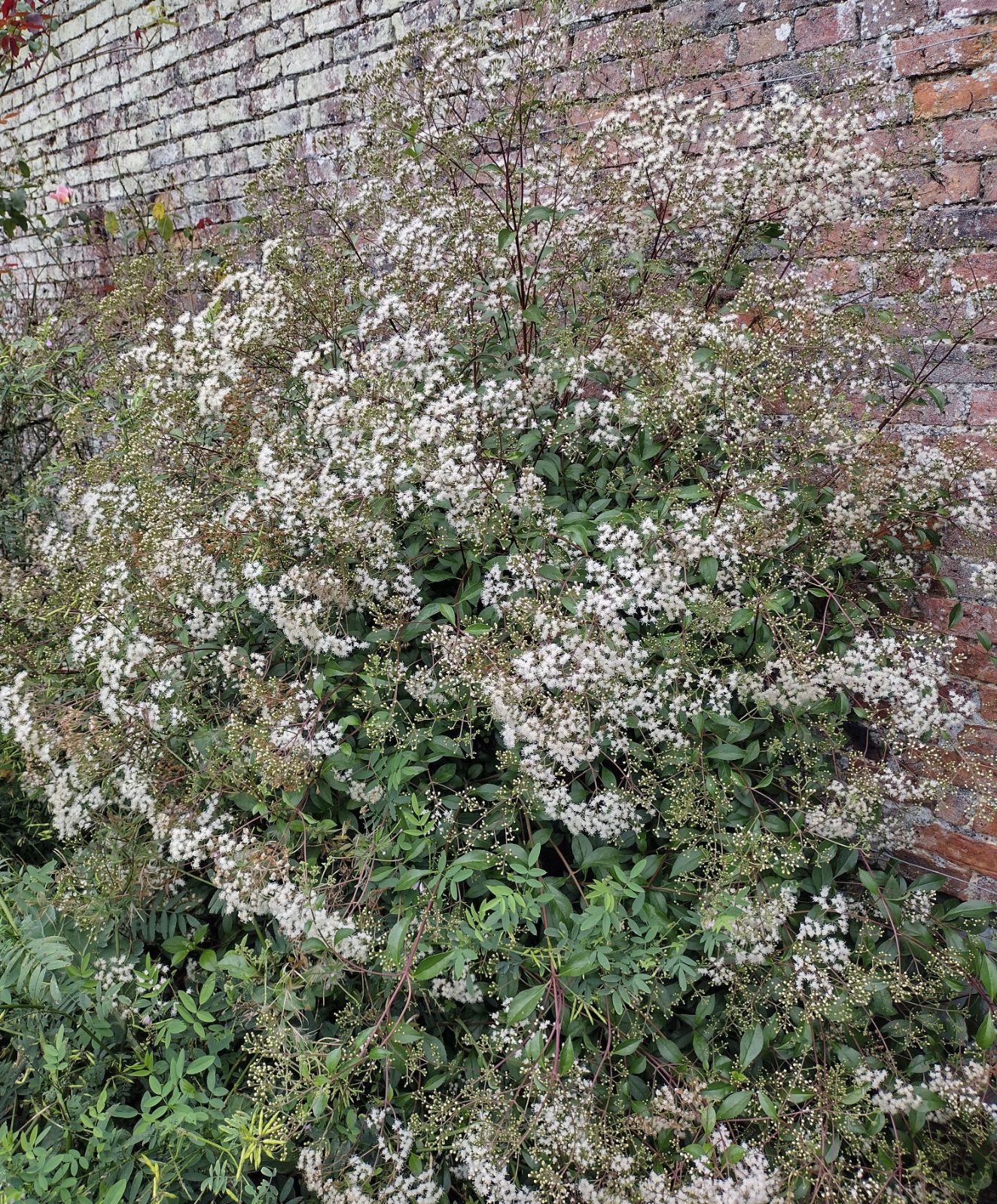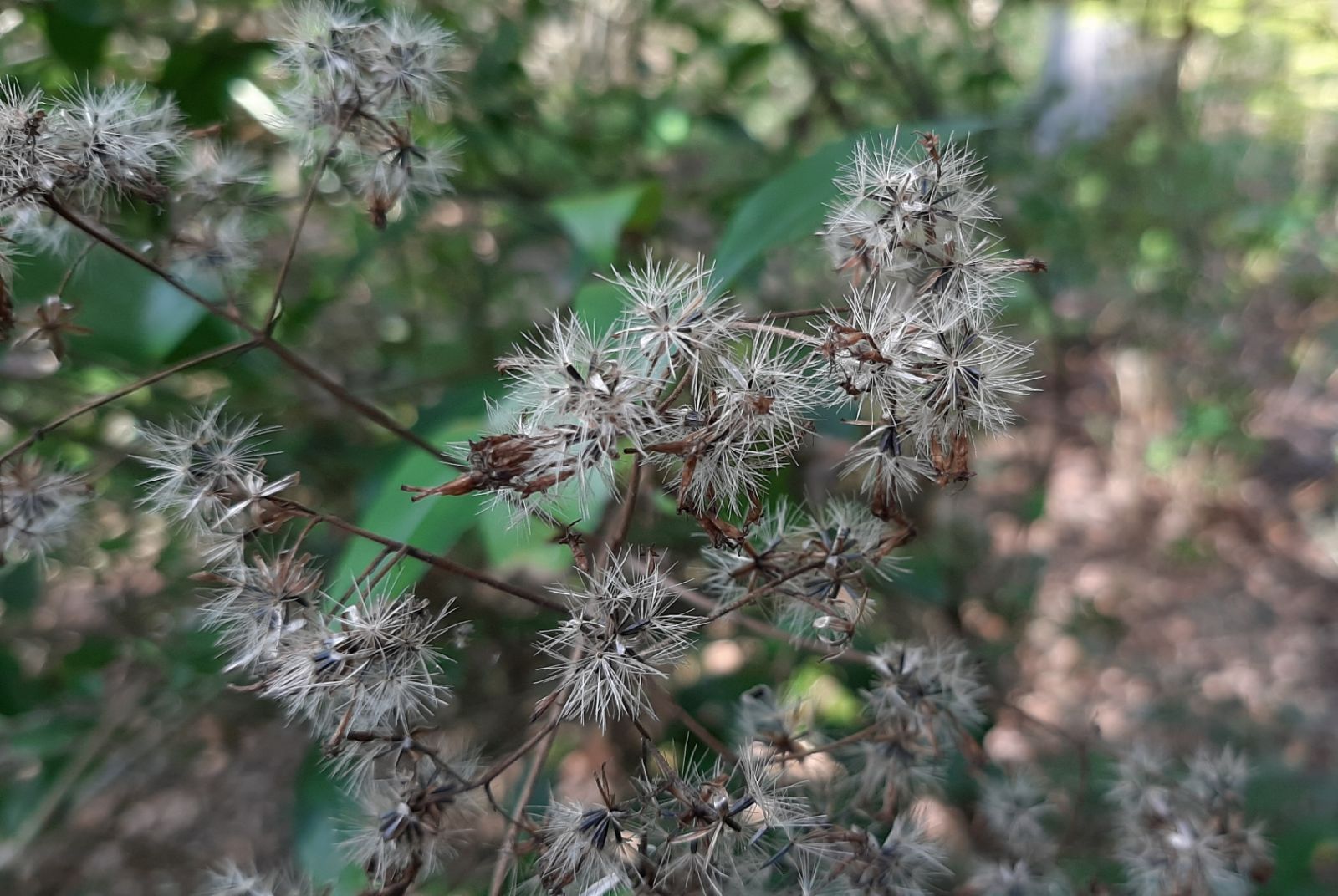Ageratina ligustrina
Credits
Article from Bean's Trees and Shrubs Hardy in the British Isles
Recommended citation
'Ageratina ligustrina' from the website Trees and Shrubs Online (treesandshrubsonline.
Genus
Synonyms
- Eupatorium ligustrinum DC.
- Eupatorium micranthum Lessing
- Eupatorium weinmannianum Reg. & Koern
Other taxa in genus
Described by Bean (1981) as Eupatorium ligustrinum.
An evergreen bush of dense growth and hemispherical shape, as much as 9 ft high and wide, the whole of the plant free from down except the flower-stalk and the scales of the involucre. Young shoots slender, slightly angular, often purplish on the sunny side. Leaves opposite, elliptical to elliptical-lanceolate, sometimes inclined to obovate, mostly pointed, tapered at the base, shallowly or indistinctly toothed on the terminal half, 2 to 4 in. long, 3⁄4 to 11⁄2 in. wide, pale bright green; stalk 1⁄4 to 5⁄8 in. long. Inflorescence a branching, flattish, rounded cluster of corymbs up to 8 in. wide. Flower-heads 1⁄4 in. wide, each composed of six to ten florets surrounded at the base by an involucre of linear, downy scales. Florets tubular, 1⁄4 in. long, creamy-white, sometimes slightly rose-tinted, charmingly fragrant, the bi-lobed stigmas much exposed.
Native of E. Mexico from Tamaulipas to Chiapas; and of Guatemala and Costa Rica. In gardens, where it is better known under one or other of the synonyms given above, it is most commonly grown as a pot plant, with greenhouse protection except during the summer. It is, however, hardy enough to be grown outdoors in the mildest parts; a plant at Logan in Wigtownshire has attained a height of 8 ft and a spread of 12 ft. A 6 ft plant at Belhaven House, E. Lothian, flowers throughout the winter and stood 12° of frost.
JMG addition: It is now (2022) very widely grown outside in the UK and Ireland, though usually with the shelter of a wall behind it.




